George Cukor

Director
Birth Date: July 7, 1899
Death Date: January 24, 1983 — 83 years old
Birth Place: New York, New York
One of the most respected directors of Hollywood's Golden Age, Oscar-winning filmmaker George Cukor was frequently described as a "women's director," thanks to his stellar collaborations with Katherine Hepburn on ten films, including "The Philadelphia Story" (1940), as well as Joan Crawford on "The Women" (1939), Ingrid Bergman on "Gaslight" (1944), Judy Holliday on "Born Yesterday" (1950), Judy Garland on "A Star is Born" (1957) and Audrey Hepburn on "My Fair Lady" (1964). The appellation, while appropriate, did not sufficiently explain the scope of Cukor's five-decade career; rather, it was his scrupulous attention to every detail of his films - from pace and design to casting, scripting and editing - that created a fluid, flawless aesthetic that remained almost invisible to viewers until after the final credits rolled.
Though he worked in all genres - from comedies and dramas to musicals - his true focus was the complicated entanglement of relationships between friends and lovers in the face of political, social and interpersonal conflicts. In doing so, Cukor crafted a body of work that represented some of the finest pictures ever released by Hollywood studios; pictures that stood the test of time and changing audiences, who returned to Cukor's cinematic offerings in order to see a master craftsman at work.
George Dewey Cukor was born July 7, 1899 in New York City. The only son of Hungarian Jewish parents Victor and Helen Cukor, who drew their son's middle name from Naval hero George Dewey, he began acting in local productions as a youth, and performed in a recital alongside his future mentor, David O. Selznick, when both were just boys. Theater became his first and greatest love as a teenager; he would frequent cut classes at DeWitt Clinton High School to see afternoon matinees at the famed Hippodrome. He later worked as a supernumerary actor with the Metropolitan Opera.
After graduating from DeWitt Clinton, Cukor enrolled in the City College of New York with designs on following his father, an assistant district attorney, into a career in law. While there, he joined the Student Army Training Corps in 1918, but missed serving in World War I by only two months. After Cukor's duty was concluded, he left school and began working in theater.
In 1920, he served as stage manager for a Syracuse-based troupe called the Knickerbocker Players before forming his own company, the C.F. and Z Production Company with Walter Folmer and John Zwicki. There, he made his debut as a director on various productions before heading to Broadway with Melchior Lengyel's "Antonia." For the next five years, he worked on Broadway in the winters, gradually gaining acclaim for shows like a 1926 adaptation of "The Great Gatsby." In the summer months, he returned to Rochester to work with his production company, which later became the Cukor-Kondolk Stock Company and featured the likes of Louis Calhern, Frank Morgan, Reginald Owen and a young Bette Davis.
In 1927, he relocated to New York to work as the stage manager for the Empire Theater on 42nd Street, where he oversaw productions with Ethel Barrymore and Jeanne Eagles, among others. The following year, Cukor headed to Hollywood to join the growing ranks of theater people who were finding employment in feature films.
He signed a contract with Paramount Pictures and, after a six-month apprenticeship, began working as a dialogue coach and screen test director on films like "All Quiet on the Western Front" (1930). That same year, he earned his first screen credit as co-director on "Grumpy" (1930), a mystery starring English actor Cyril Maude in his signature role as a cantankerous British barrister. Two more films with Gardner followed before Cukor gained his first solo outing with "Tarnished Lady" (1931), a melodrama with Tallulah Bankhead as a socialite whose unrequited love for a callous writer leads her to personal and financial ruin.
In 1932, Cukor signed on to replace Ernst Lubitsch as director on "One Hour with You" (1932), a musical comedy vehicle for Maurice Chevalier. Lubitsch, who had taken ill during the shoot, left the project to recuperate, but remained on board as producer. However, after two weeks of recuperation, Lubitsch returned to the set and began directing scenes, with Cukor's consent. After filming wrapped, Lubitsch demanded that Paramount remove Cukor's directorial credit, and threatened to leave the studio if his request was not honored.
Studio executive B.P. Schulberg asked Cukor to cooperate with Lubitsch's request, but the young upstart instead responded with a lawsuit. After eventually settling for a dialogue director credit, a disgusted Cukor left Paramount in disgust, instead signing with his old friend David O. Selznick at RKO. There, Cukor developed his unique and subtle style, which over the years was defined as "theatrical," with a heavy emphasis on female actresses in what were commonly known as "women's pictures."
It was true that Cukor worked well with actresses and with material based in the theater and film worlds, as evidenced by his first picture for RKO, 1932's "What Price Hollywood?" The film, which paralleled the life of rising starlet Constance Bennett with that of fading actor Lowell Sherman, was filled with sudsy romance, tear-jerking moments and a touch of scandal. But as writer and Cukor friend Gavin Lambert noted in a 2002 essay, Cukor's true interest lay with stories about truth, identity, and the self-deception that was often an integral part of the show business world, as well as interpersonal relationships between men and women. These themes would remain at the core of Cukor's work for the next half-century.
Cukor's championing of Katherine Hepburn also contributed to his label as a "women's director" - a title which he loathed. He had fought for her to star in his 1932 remake of "A Bill of Divorcement" as Billie Burke's daughter, whose impending marriage to fiancé Grey Cavanaugh is threatened by familial uproar over the return of her father (John Barrymore) after two decades in a mental hospital. Selznick, however, disliked the actress and believed that her presence in the film would actually hamper its box office success. Cukor disregarded his boss' opinion and cast her in the film, which served as both the launch of her storied career and the beginning of their long friendship and professional relationship.
Over the next decade, Cukor would helm a string of popular comedies and dramas for the studio, all delivered with exacting detail in regard to performance, story and production. Behind each of the films, beginning with 1932's "Rockabye" and ending with the infamous flop "Sylvia Scarlett" (1935), Cukor would explore the tensions between class, sex and society; in the wildly successful "Little Women" (1933), which netted his first Oscar nomination for Best Director, the simple New England life of the March sisters, led by Hepburn's Jo, is tested by the demands of maturity and romance.
Meanwhile "Dinner at Eight" (1933), which Cukor directed as a loan-out for MGM, explored the effects of power and money on romantic and business relationships via a stellar cast that included John and Lionel Barrymore, Jean Harlow and Wallace Beery. His "Romeo and Juliet" (1936), with Norma Shearer and Leslie Howard as Shakespeare's star-crossed lovers, was of course the epitome of class conflict, as was his celebrated take on Charles Dickens' "David Copperfield" (1935), another loan-out to MGM with Lionel Barrymore and an acclaimed dramatic turn by W.C. Fields.
In all cases, Cukor worked with the industry's best behind-the-scenes talent, from producers Irving Thalberg and Meriam C. Cooper, to writers Frances Marion and Herman J. Mankiewicz, to composer Max Steiner, all of which generated a high level of quality that critics frequented described as "gloss," another descriptive term that dogged Cukor throughout his career. In reality, the combined efforts of these talented people were orchestrated by Cukor to deliver consistency of product; he believed that the talents of his actors or writers should be matched on all levels by his production staff. The result was what writers and filmmakers like Francois Truffaut noted as a masterful control of tone, rhythm and pacing in his films, resulting in something like movie perfection.
Not all of his efforts were celebrated by the press and public. 1936's "Sylvia Scarlett," with Hepburn as a con artist who disguises herself as a man, and Cary Grant as the Cockney rogue who loves her, was one of the biggest failures of the 1930s. More famously, Cukor was fired as director of "Gone with the Wind" (1939) after devoting more than two years to the project's development. The Hollywood rumor mill swirled around Clark Gable as the culprit behind Cukor's removal, due to his discomfort over Cukor's sexuality and fear that he, as the male lead, would be lost in the shuffle by the reputed "woman's director."
In truth, Cukor had been one of the industry's most openly gay figures since his debut in 1928, but Gable and Cukor had also worked together prior to "Wind" on 1934's "Manhattan Melodrama" without incident. The real architects behind Cukor's dismissal were his patron, David O. Selznick, and Cukor himself. The former had grown tired of Cukor's methodical pace, as well as his decision to turn down such pet projects as "A Star is Born" (1937). As for the director, he complained that unless he was able to work under the conditions he desired, he would have to leave the project. Selznick agreed to Cukor's decision, having already received quality work from him on several interim projects, including several scenes for "The Adventures of Tom Sawyer" (1938). During his downtime on "Wind," Cukor also spent a week on the set of MGM's "Wizard of Oz," where he made several key decisions on the film's development, including the change in Dorothy's hair color from blond to auburn, and bringing Jack Haley aboard to replace Buddy Ebsen as the Tin Man. He departed the project in late 1938 to return to work on "Wind." His replacement on both pictures would be MGM workhorse, Victor Fleming.
Following his dismissal by Selznick, Cukor moved to MGM, where he began the second and most significant period of his career. He launched his tenure at the studio with "The Women," (1939), an acerbic adaptation of Clare Booth Luce's play about the social and romantic travails of a group of well-heeled Manhattan women. Sporting an extraordinary cast, including Norma Shearer, Joan Crawford, Rosalind Russell and Cukor's personal favorite, Paulette Goddard, the comedy fit neatly into the director's oeuvre through its clash between bored socialites, the husbands who ignored them (no men appeared onscreen), and the friends they believed would support them. "The Women" was one of the biggest hits in the storied year of 1939, and was soon followed by a string of Cukor's finest films.
His tenure at MGM was marked by a string of extraordinary hits and a smattering of dismal failures. His first picture after "The Women" was a bonafide American classic and earned his second Best Director Oscar nomination: "The Philadelphia Story" (1940), with Hepburn as a brassy socialite caught between her playboy ex-husband (Cary Grant), a do-gooder reporter (James Stewart) and the man (John Howard) she believed she needed to marry, was among the crown jewels of Hollywood comedies, and helped to re-establish Hepburn as a movie star after years as "box office poison."
He bookended his time at MGM with "Gaslight" (1944), a memorable thriller about a woman (Ingrid Bergman) who believed that her husband (Charles Boyer) was planning to murder her. It received seven Oscar nominations, including Best Picture and Best Actress for Bergman. Between these efforts was the courtroom drama "A Woman's Face" (1941), with Joan Crawford as a disfigured blackmailer in turmoil over returning to her criminal life after her appearance is corrected by plastic surgery, and two major failures - "Two-Faced Woman" (1945), a dismal comedy that marked the end of Greta Garbo's film career, and "Her Cardboard Lover" (1942), which rang down the curtain on Norma Shearer's life on screen as well.
In 1942, the 43-year-old Cukor enlisted in the Army Signal Corps, where he produced training films for military personnel. The experience was a disappointment for him, as he found it difficult to give direction to his superiors. He also never advanced beyond the rank of private, despite intervention from Frank Capra, and suspected that his sexual orientation was the stumbling block. Cukor was honorable discharged in 1944 and returned to MGM, where his career picked up where he had left off.
Key to his third act success was a collaborative relationship with writers Garson Kanin and Ruth Gordon, whom he had met at his home in 1939 before they married in 1941. Together, they forged some of the most sparkling Hollywood comedies of the late '40s and early 1950s, including two of the best Katherine Hepburn-Spencer Tracy films, "Adam's Rib" (1949) and 1952's "Pat and Mike, as well as "Born Yesterday" (1950), an extraordinary comedy about a politician's mistress (Judy Holliday) who, upon discovering her own innate intelligence, throws off her boorish lover (Broderick Crawford) to fall for her tutor (William Holden). The picture earned Cukor a fourth Oscar nomination, and made a star of Holliday, who won the Oscar for her performance in the film. She would go on to appear in two more hits for Cukor, "The Marrying Kind" (1952), which introduced war hero-turned-actor Aldo Ray, and "It Should Happen to You" (1954), which brought a young comic actor named Jack Lemmon to audiences' attention.
In 1952, Cukor experienced one of the greatest disappointments of his career with the 1952 remake of "A Star is Born." Cukor had turned down the original version in 1937, much to Selznick's dismay, and did the same for producer Sid Luft, who was mounting the new version as a Technicolor musical remake for his wife, Judy Garland, at Warner Bros. Cukor was hesitant, as the film's plot was remarkably similar to his "What Price Hollywood?" but the opportunity to direct a color musical with a script by Moss Hart proved too enticing to turn down. He envisioned Cary Grant, but the actor refused the part, which ended their professional and personal relationships. Warner Bros. chief Jack Warner rejected Cukor's next considerations, Humphrey Bogart and Frank Sinatra, and eventually decided on James Mason as the male lead.
The production soon proved to be one of Cukor's most trying, with script changes arriving daily, as well as the challenges of dealing with Garland's addictions and personal issues. A 210-minute cut was assembled in 1954 prior to Cukor leaving for Europe and then India to begin production on "Bhowani Junction" (1954). The original cut received stellar reviews, but Warner executives, fearing its length would turn away ticket buyers, trimmed the final cut down to 154 minutes. The creative failure of "A Star is Born" marked the end of Cukor's career as a consistent producer of top-quality films. He would bounce between hits like the Golden Globe-winning musical "Les Girls" (1957) with Gene Kelly and Mitzi Gaynor and commercial flops like "Heller in Pink Tights" (1960), a Western comedy with Sophia Loren and Anthony Quinn that, despite its lavish sets and visuals, was a personal low point for Cukor, who disowned the final product.
There was also the collapse of "Something's Got to Give" (1962), which found Cukor shooting around an increasingly unreachable Marilyn Monroe. After a month of shooting, he had less than 10 minutes of usable footage with the often overly medicated and consistently late actress, who was summarily fired by Fox executives before the entire picture was abandoned. Two months after its collapse, Monroe was found dead at age 36 in her Hollywood home.
Cukor's greatest career triumph also came with adversity. Hired by Warner Bros. to helm their film adaptation of the Broadway musical "My Fair Lady," Cukor was faced with conflicts both in front of and behind the camera. There were frequent disagreements with designer Cecil Beaton, while star Audrey Hepburn - already a controversial choice due to her lack of singing ability - upset the crew with her numerous diva-like demands. Critics were also unkind to the final result, with many noting that Cukor's serene pace stifled the musical's ebullience. Despite these issues, the film went on to be one of the biggest hits of the decade, and earned Cukor his first and only Oscar for Best Director,
Credits

Rich and Famous

The Corn Is Green

The Blue Bird

Love Among the Ruins

Travels With My AuntStream

JustineStream

The Dick Cavett ShowStream

My Fair LadyStream
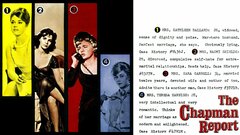
The Chapman ReportStream

Pjesma bez kraja
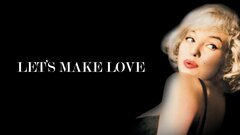
Let's Make LoveStream
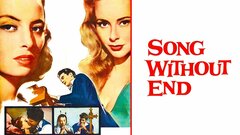
Song Without EndStream

Filmovi Sophije Loren: Opasna đavolica

Heller in Pink Tights

Le Bal des adieux

Hot Spell

Les Girls
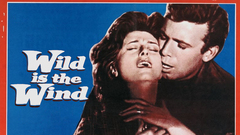
Wild Is the Wind

Bhowani JunctionStream

It Should Happen to You

A Star is BornStream

The ActressStream

De la Misma Carne
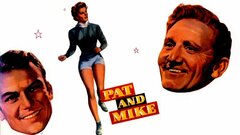
Pat and MikeStream
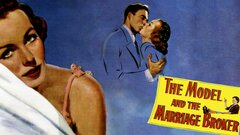
The Model and the Marriage BrokerStream
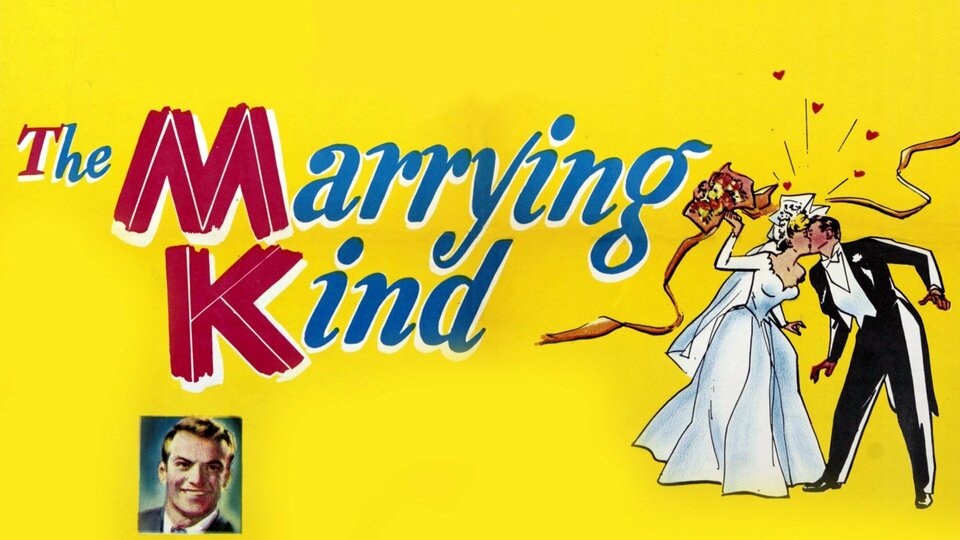
The Marrying Kind

A Life of Her Own
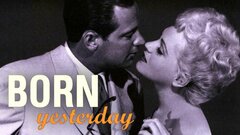
Born YesterdayStream
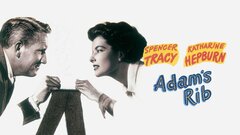
Adam's RibStream

Edward, My SonStream
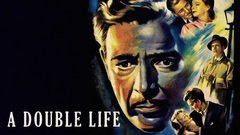
A Double Life

Desire MeStream

GaslightStream

I'll Be Seeing You

Winged Victory
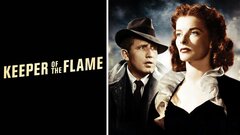
Keeper of the FlameStream

Her Cardboard Lover
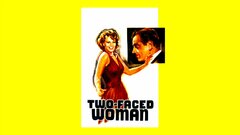
Two-Faced Woman
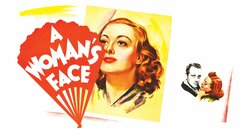
A Woman's FaceStream

Susan and God

The Philadelphia StoryStream

The WomenStream
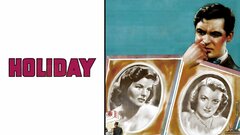
HolidayStream
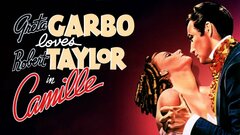
CamilleStream
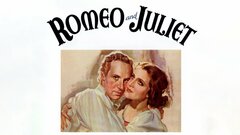
Romeo and JulietStream
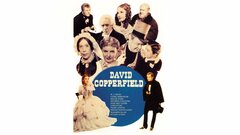
David CopperfieldStream
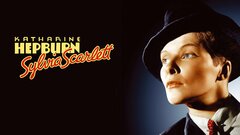
Sylvia ScarlettStream

No More Ladies

Dinner at EightStream

Rockabye
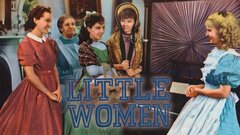
Little WomenStream

Our Betters

A Bill of Divorcement

One Hour With You

What Price Hollywood?

Tarnished Lady

Girls About Town

The Virtuous Sin

The Royal Family of Broadway





































